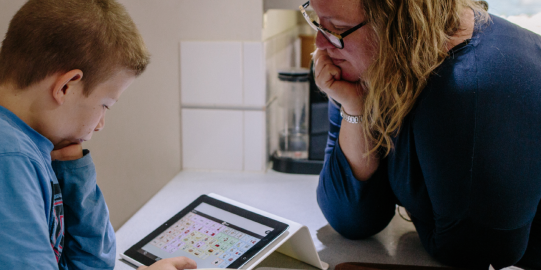Much of what is said and written about autism is from the perspective of family members, teachers, therapists and academics living or working with autistics.
Why is the discourse around autism dominated by neurotypicals?
There are several reasons for this. There is, of course, the simple fact that neurotypicals far outnumber autistics*. Even more important is the general human tendency to avoid contradictory information. Rather than expose ourselves to perspectives that might contradict mainstream beliefs about autism rooted in neurotypical thinking, we tend to identify reasons to put aside or even discredit autistic views. As a result autistic advocates sometimes are confronted with pretty aggressive responses. This makes them hesitant to share their experiences and views with the wider world. Not every autistic adult feels up to blogging about their own life.
Insights from autistic bloggers
The discourse around autism is dominated by neurotypicals. Young parents who have just found out that their child is on the spectrum are rarely exposed to the perspective of autistics. Yet, there are many autistic writers and bloggers that have a lot of enlightening insights to share. Many of those insights run counter to the conventional wisdom perpetuated by neurotypicals.
Autistic adults warn against certain autism organizations. They warn against some autism therapy practices. They warn against trying to make autistic people normal. They fight against people first language (i.e. “person with autism” versus “autistic person”). Yet those autism organizations continue to successfully collect funds. The therapy practices continue to thrive. Autistic children are still “treated” to become more “normal”. Similarly, many parents and professionals are still offended when terms such as “autistic” or “autistic student” are used.
We need to listen
To understand what autistic children and adults experience it is vital to listen to them. Where they are unable to advocate for themselves we need to provide access to augmentative and alternative communication. We need to use techniques such as modeling to support their language and communication development in a natural way. However, that is a process that takes time and patience. In the meantime, we need to listen to the accounts of other autistic people and their experiences. They are the experts we can all learn from. Not instead, but in addition to the perspectives of people living or working with autistic people. A recent blog post by Dr. Fletcher-Watson also really nicely makes this point in the context of autism research.
Look for common ground
It might be quite difficult to read some of the blog posts by autistic bloggers. They might call into question some of the things you have always firmly believed in or have been told are evidence-based. Try not to fall into the trap of telling yourself that this eloquent autistic blogger is so unlike your own autistic child or students that the experiences shared by the blogger have no bearing on your own situation. Instead, try to look for the common grounds. Look for the things you can connect to and relate to your own situation or that of your student or child. Consider the implications of looking at these things with a different perspective. The perspective of someone who has experienced similar things to what your child or student is experiencing. Think about what you can learn from reading about those experiences.
Learn more about autistic perspectives
We want to help you find out more about the world of autism from the perspective of autistic people. To celebrate autism acceptance month, we have invited some autistic people to write a blog post for us to share their experiences. We will also be sharing a number of blogs written by autistic bloggers. We hope that you will learn as much from reading these perspectives as we do.
*Autistics remain a minority even though the CDC reports an ever increasing prevalence of autism. This doubling in 10 years, may be more a reflection of diagnosis and reporting than of an actual increase, as explained in The Thinking person’s Guide to Autism.




